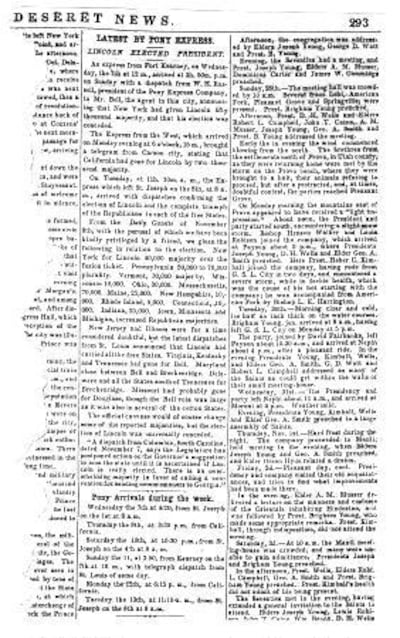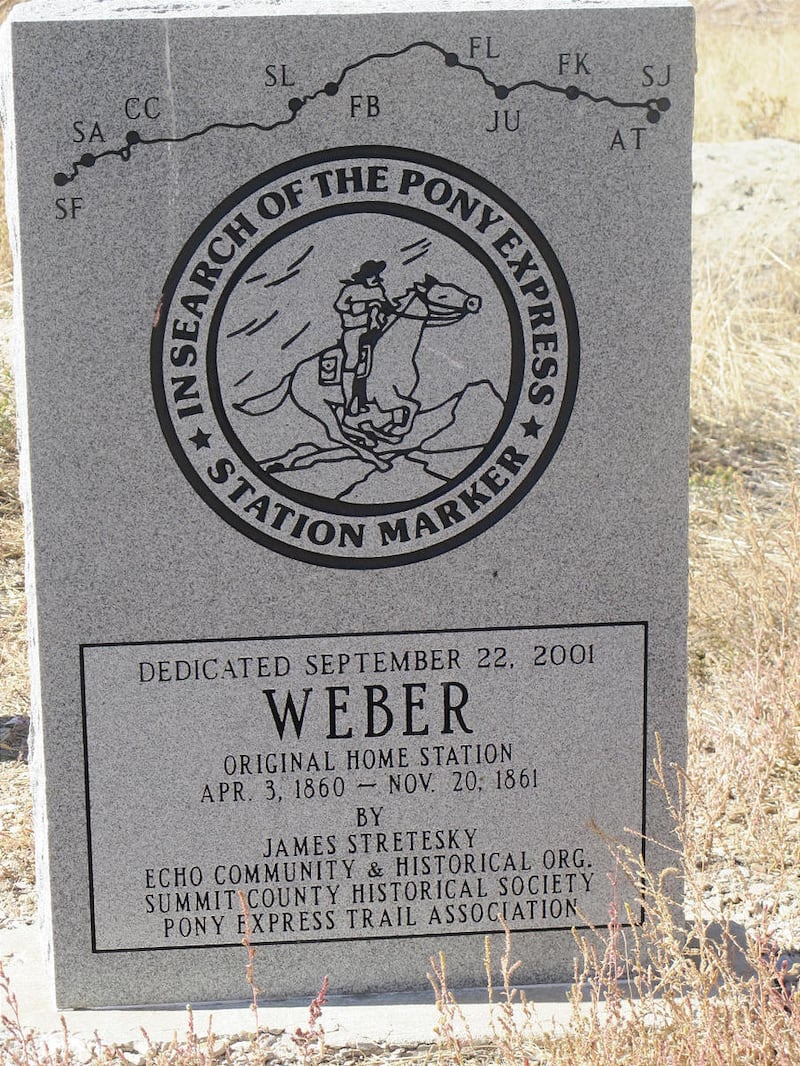A look back at local, national and world events through Deseret News archives.
On Oct. 26, 1861, the legendary Pony Express officially ceased operations, giving way to the transcontinental telegraph.
The last run of the Pony Express — which cut through Utah and the West — was completed the following month, but the short-lived news dispatch service lives on.
In artwork.
In Western lore.
In re-creation rides.

Per historians, the Pony Express was viewed as a step forward in meeting the demand for postal service in Utah, Oregon, California and other rapidly filling sections of the nation. It also fed out-of-the-way Western newspapers, like the Deseret News.
But it was always expected to be temporary. Roads, telegraph lines and rail routes that would link Western settlements to the rest of the nation already were under construction.
Pony riders were a breed apart, primarily teenagers who met the requirements of an ad for “young, skinny, wiry fellows, not afraid of danger and preferably orphans.” The average age was 19, but there was at least one rider of 13. Some, like Buffalo Bill, became legendary.
In its brief heyday, as many as 700 riders and horses, riding 24-hours a day over 10 days, could cover 1,966 miles. One end of the route was Sacramento, California, while the other was in St. Joseph, Missouri.
In Utah, locations like Echo Canyon, Simpson Springs, Fairfield, Murray Park and This Is The Place State Park note the route.
Here are stories from Deseret News archives about the Pony Express:
“Pony Express quickly raced into legend”
“Riders go in search of the Pony Express trail””
Pony Express rides again in Utah”
“Summer adventure on the Pony Express National Byway”
“Eagle Mountain hails Pony Express”
“Pony Express commemoration to ride through Utah”
“The Clarkston Pony Express Race is one wild ride”
“Historian will hit trail in honor of Pony Express”
“Picturing history: The Pony Express and Mormon Pioneer National Historic trails”



